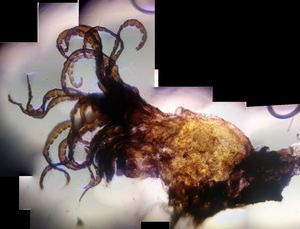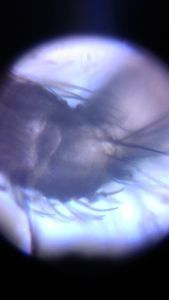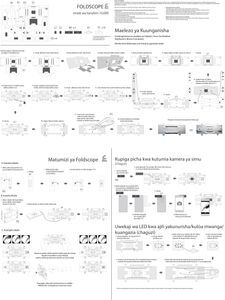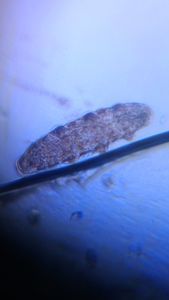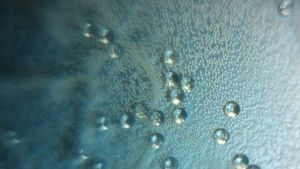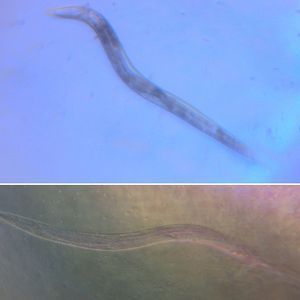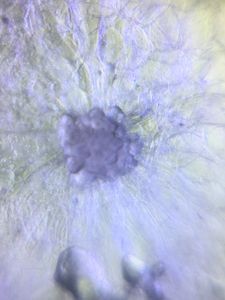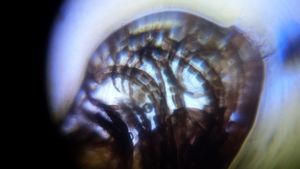It’s raining caterpillars!
 Apr 08, 2016 • 12:56 AM UTC
Apr 08, 2016 • 12:56 AM UTC Unknown Location
Unknown Location 140x Magnification
140x Magnification Microorganisms
Microorganisms
Tom Hata
Learn about the author...
17posts
18comments
3locations
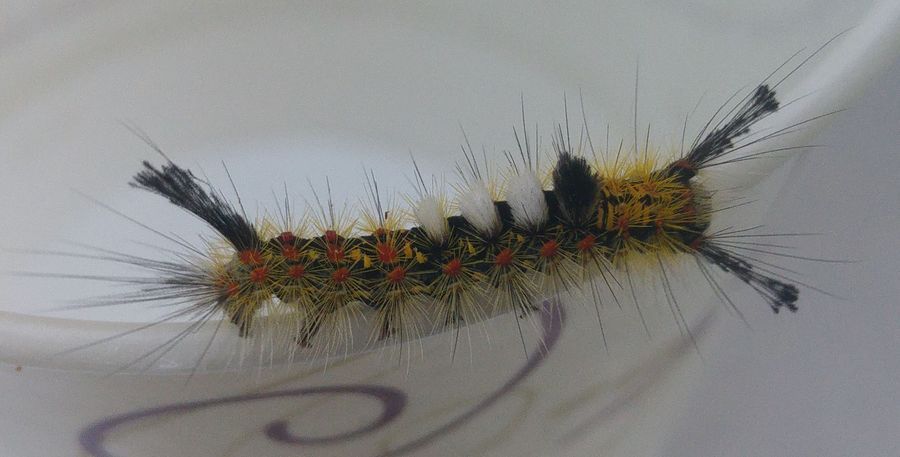
Currently at Stanford, it’s literally raining caterpillars. Apparently, once every few years, there are population booms of Western Tussock Moth larvae http://bgm.stanford.edu/groups/grounds/ipm/tussock . If you’re in the wrong spot, you’ll end up covered in these guys as they fall from the trees.
Of course, I couldn’t wait to put one of these guys under a Foldscope, so I caught one of them. As you can see, this little guy was perfectly content walking on the rim of a paper cup. Really, I left it there for about 2 hours and it did just that the whole time. As a Foldscope specimen, these guys are a bit large, so I had to think about how to tackle this challenge.
Of course, I couldn’t wait to put one of these guys under a Foldscope, so I caught one of them. As you can see, this little guy was perfectly content walking on the rim of a paper cup. Really, I left it there for about 2 hours and it did just that the whole time. As a Foldscope specimen, these guys are a bit large, so I had to think about how to tackle this challenge.
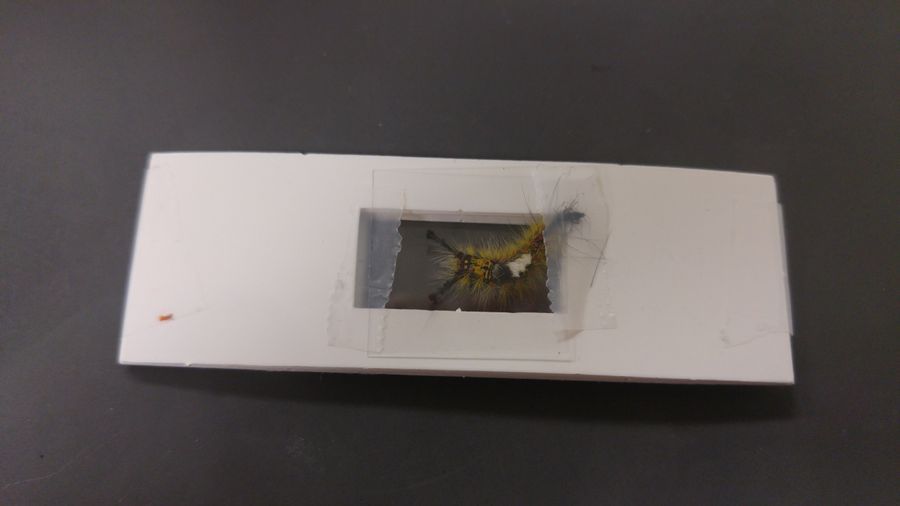
I wanted to image the critter live, so I made a well for it using a stack of paper slides and glass cover slips (e.g., https://microcosmos.foldscope.com/?p=10184 ). It was so large that it took a stack of 5 paper slides. The next problem to tackle was that the caterpillar was incredibly opaque, so lighting it with the light module would not be of much use. Instead, I used side illumination with an LED (see https://microcosmos.foldscope.com/?p=13486 ) so that light on the critter’s body would be reflected toward the lens. The results were simultaneously amazing and somewhat terrifying.
A close-up look revealed hairs upon hairs upon hairs. Also, visible are its constantly-moving mouth parts. I was intrigued by the hairs, so I lightly put a piece of tape across the critter’s back to extract loose hairs.
A close-up look revealed hairs upon hairs upon hairs. Also, visible are its constantly-moving mouth parts. I was intrigued by the hairs, so I lightly put a piece of tape across the critter’s back to extract loose hairs.
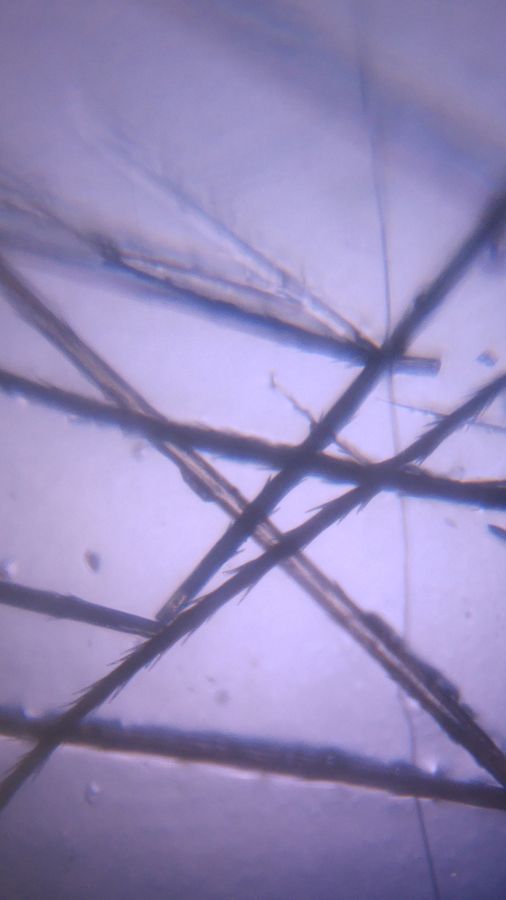
Bright-field images using the light module revealed part of the picture. The structures came into view, but the distinct colors – the reds, whites, yellows, and blacks – weren’t distinguishable in this mode. Once again I used side illumination, and the story became much clearer.
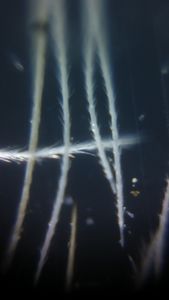

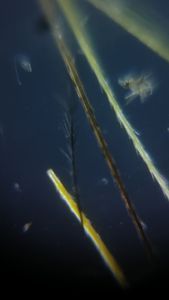
Not only did the true color of these hairs become observable, it became obvious that the different colored hairs were structurally distinct from each other. I wonder if these differences serve a purpose, and how they correlate to the locations of these hairs on the caterpillar’s body.
The most rewarding part of this experiment was that the caterpillar was unharmed. I was able to remove it from the slide and send it on its merry way. Perhaps I should have read up on this particular caterpillar before setting it free, however. I didn’t realize that it’s actually a pest to the point that there are efforts to actively control their populations. I guess my first hint should have been how unnatural it is for it to be raining caterpillars.
The most rewarding part of this experiment was that the caterpillar was unharmed. I was able to remove it from the slide and send it on its merry way. Perhaps I should have read up on this particular caterpillar before setting it free, however. I didn’t realize that it’s actually a pest to the point that there are efforts to actively control their populations. I guess my first hint should have been how unnatural it is for it to be raining caterpillars.
Sign in to commentNobody has commented yet... Share your thoughts with the author and start the discussion!
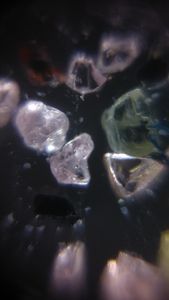
 0 Applause
0 Applause 0 Comments
0 Comments